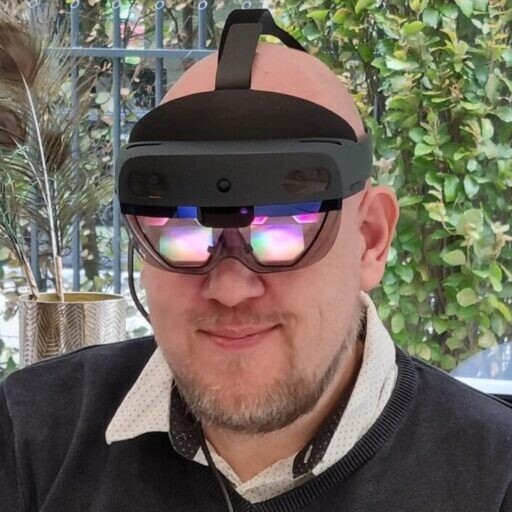
Two tech giants Apple and Meta have been at the forefront of an intriguing battle in the augmented reality (AR) space. When Meta introduced their Orion AR glasses, the world buzzed with speculation, wondering how Apple would respond. Many thought the Apple Vision Pro was already obsolete. However, if I were the CEO of Apple, I’d be thrilled. Let me tell you why.
Apple’s Holy Trinity: Hidden in Plain Sight
The AR landscape is not solely defined by the glasses themselves. It’s tethered to a “Holy Trinity” of devices comprising the AR glasses, a hub device, and a wristband. Meta introduced peripherals to support their AR glasses, with a main hub, referred to as the puck, and a neural wristband. Interestingly, Apple already has equivalents: the Apple iPhone and Apple Watch.
Meta’s Orion vs. Apple’s Ecosystem
Meta’s Orion AR glasses, driven by a high production cost of around $10,000, might be positioned at a premium price point although Meta promised to work hard to cut the eventual retail price significantly. Meanwhile, Apple has outlined a (albeit rocky) roadmap towards their own AR glasses, a vision they’ve held for years now. Apple aims to integrate their existing devices—the iPhone and Apple Watch—seamlessly into this AR future. Consumers won’t need new gadgets; many already use these two types of devices daily.
Cost and Market Penetration
Apple enjoys significant advantages in terms of cost and market penetration. The Apple Watch retails at around $400-500, and the iPhone averages roughly $850. This pre-existing investment by consumers paves the way for more cost-effective AR glasses, unlike Meta, which has to convince users to buy an entirely new Meta “Orion Kit” comprising of the smart glasses, a puck and neuro-wristband.
Meta’s challenge is monumental as they venture into a market where Apple’s iPhone leads significantly, covering 52% of the smartphone market in the US (though 21% globally). Additionally, the recent success of Meta’s Orion has ignited the industry’s belief in the feasibility of AR technology, pushing both companies further along their development paths.
The Evolution of Smartphones: a Paradigm Shift
This battle signals a crucial paradigm shift. The iPhone, and similar smartphones, are transforming into hubs of modular mobility, what Meta now refers to as “pucks.” This evolution will see smartphones becoming central nodes in a broader ecosystem of connected devices, gradually fading into the background as their functionalities are distributed across AR glasses and other wearables.
Apple’s confidence stems from their comprehensive ecosystem strategy. They already control two-thirds of the necessary trio—smartphones and smartwatches. As AR technology matures, users will naturally transition, benefiting from devices they already own and understand. This ecosystem allows Apple to focus on refining the AR experience rather than building new devices from scratch.
From Competition to Cooperation
Meta, on the other hand, is undergoing a significant transformation. Their focus has shifted towards creating an operating system for the metaverse, aiming to be the Microsoft of the 21st century. Their partnerships, such as Luxottica for fashionable design and retail distribution, signal an intelligent strategy. However, challenges await when Meta starts mass-producing their AR glasses. The partnership’s dynamics may change, reminiscent of past dilemmas Microsoft faced with its partners.
Ultimately, this may not be a “Holy Trinity War” but a quest for the “Holy Grail” of AR technology. It’s essential for tech giants to balance competition with cooperation, ensuring technological advancements benefit the broader market. Meta’s recent calls for collaboration—with Google for co-watching on YouTube and Microsoft for extending desktops naturally—reflect a shift towards a more integrative approach.








